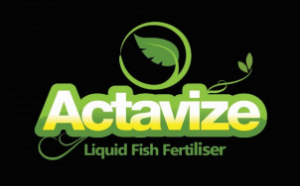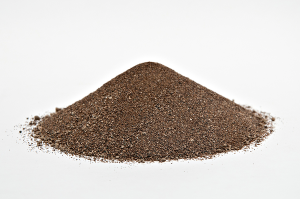I was encouraged by the attendance at Mystery Creek this year. Farmers have been under financial pressure for far too long. The people who work our land and produce our food work extraordinary hours under conditions that many other folks would not even consider working in. They do this because they care and believe in what they are doing.
The indication is that some commodity prices are lifting which is good to see. It will still be some time before some dairy farmers see an increase in their bank account as they will have to pay back the shortfall to the banks before they can move forward. While the drop in pay out wasn’t anticipated, the people it really affected were the primary producers and not the factories. It is time that the farmers were paid a respectable amount of money for their challenging work. Recently I had a paper sent to me regarding a carton of long life milk. It sold in Asia for the equivalent of NZ $1.80, of which the New Zealand dairy farmer got NZ$0.18. This is a pathetic amount as the product could not have been produced if it wasn’t for the New Zealand farmer.
The pH connection
pH is a soil condition you hear about a lot from “experts” – excessively so, in fact. Nevertheless, pH is important, and we should not ignore what it is telling us. pH measures soil acidity and alkalinity. As soils become more acid, grasses and clover do not grow as well, which reflects why pH levels provoke so much interest in New Zealand’s grass-based agricultural system.
The acidity or alkalinity of any substance is defined by pH using a scale of numbers from 0 (most acid) to 14 (most alkaline) with 7 being neutral. Most soil pH varies from 4 to 10, but most crops do best in slightly acid soils (6 – 6.8).
Soil pH affects the availability of nutrients, which may be connected with nutrient deficiencies and toxicities. It also determines the types of soil organisms and their ability to flourish – most bacteria, for example, cannot live in very acid conditions, whereas many fungi can.
The traditional belief is that acidity is bad and should be countered by the application of lime. But it is important to remember that some acidity is necessary for plants to absorb certain nutrients from soil colloids.
We should also remember that when pH levels are above 6 the nitrogen-fixing bacteria azotobacter can flourish. Well aerated soil allows aerobic bacteria to grow, along with fungi and actinomycetes. But if heavy rain accumulates in a low area, air is excluded and harmful anaerobic, denitrifying bacteria are allowed to release nitrogen, while fungi, actinomycetes and aerobic bacteria remain and become temporarily dormant.
It’s also worth noting that experts usually base their liming recommendations on one pH test, but testing several times a year reveals that pH can change significantly during a growing season. What’s more, fertilisers and soil conditioners have short-term and long-term effects on pH. So as long as the pH does not reach extremes either way, testing and “correction” are less important than many people think. The use of lime to “sweeten” soil is a case of doing the right thing for the wrong reason. In fact, crops benefit more from the calcium they get from the lime than they do from pH control.
Once soil pH drops under 5.8, the availability of organic nitrogen to grasses and molybdenum to clovers is reduced. As pH drops below 5.5, the amount of toxic aluminium and manganese in the soil increases, and roots do not grow into the soil. The result is that plants suffer more when rainfall is low.
While nitrogen fertilisers (except calcium ammonium nitrate and any nitrate fertiliser) do increase soil acidity, their effect is much less than photosynthesis and nitrogen.

VitaLife Magnesium
VitaLife Magnesium is a unique product containing Magnesium and Calcium, Organic Matter and Fungi for Soil, Stock and Crop Health.
VitaLife increases the development of humus. Humus, the organic ‘glue’ in the soil, results from the breakdown of organic matter by beneficial fungi and bacteria. These, along with earthworms, decompose surface litter providing rapid humus development.
As humus develops in soils there is an increase in the level of plant available nutrients, increased storage capacity for nutrients, greater moisture holding ability and improved drainage.
The organic matter is an important carbon source and provides an initial food source for beneficial microbes. Fungi are added as the majority of agricultural soils are now fungi-deficient which can explain low brix levels, low calcium and phosphate levels in the leaf, limited disease resistance and poor retention of calcium in some soils.
VitaLife Magnesium provides a natural form of Magnesium and Calcium in a ratio consistent with that required for plant uptake. The Calcium/Magnesium ratio in the soil largely determines the availability of oxygen in the soil and Oxygen is perhaps the most important element for beneficial soil microbes as most of these creatures are aerobic.
Benefits of applying VitaLife Magnesium
- improved microbial activity
- increased speed of humus build-up
- greater soil storage capacity for nutrients and moisture
- stronger more vigorous plant growth
- improved disease resistance
- more efficient use of soil phosphorus
- increased oxygen availability
When applied to pastures VitaLife Magnesium will increase magnesium levels in clovers and grasses ensuring improved stock health and is particularly effective in reducing the incidence of calcium/magnesium related metabolic disorders in lactating animals.
Actavize Liquid Fertiliser

Actavize Liquid Fertiliser is a unique fish-based liquid fertiliser for enhanced soil health and plant performance. Benefits of applying Actavize Liquid Fertiliser include:
- Healthier plants with greater disease resistance
- More vigorous plants with hardy, compact growth
- Helps maintain pastures in a vegetative state
- More rapid recovery of dry soils after prolonged dry periods
- Improved soil microbial activity
- Increased yield
- Better profitability
Actavize Liquid Fertiliser
A healthy, balanced, productive soil contains billions of micro-organisms per kg of soil which break down organic matter and soil components to liberate nitrogen, carbon dioxide and minerals in a plant-available form.
Actavize Liquid Fertiliser is a suspension containing fish meal, proteins, enzymes and amino acids, with added carbohydrates, minerals and naturally occurring growth-promotants. This blend produces a balanced liquid fertilizer with all the life-giving elements necessary to provide optimum soil health and plant performance.


